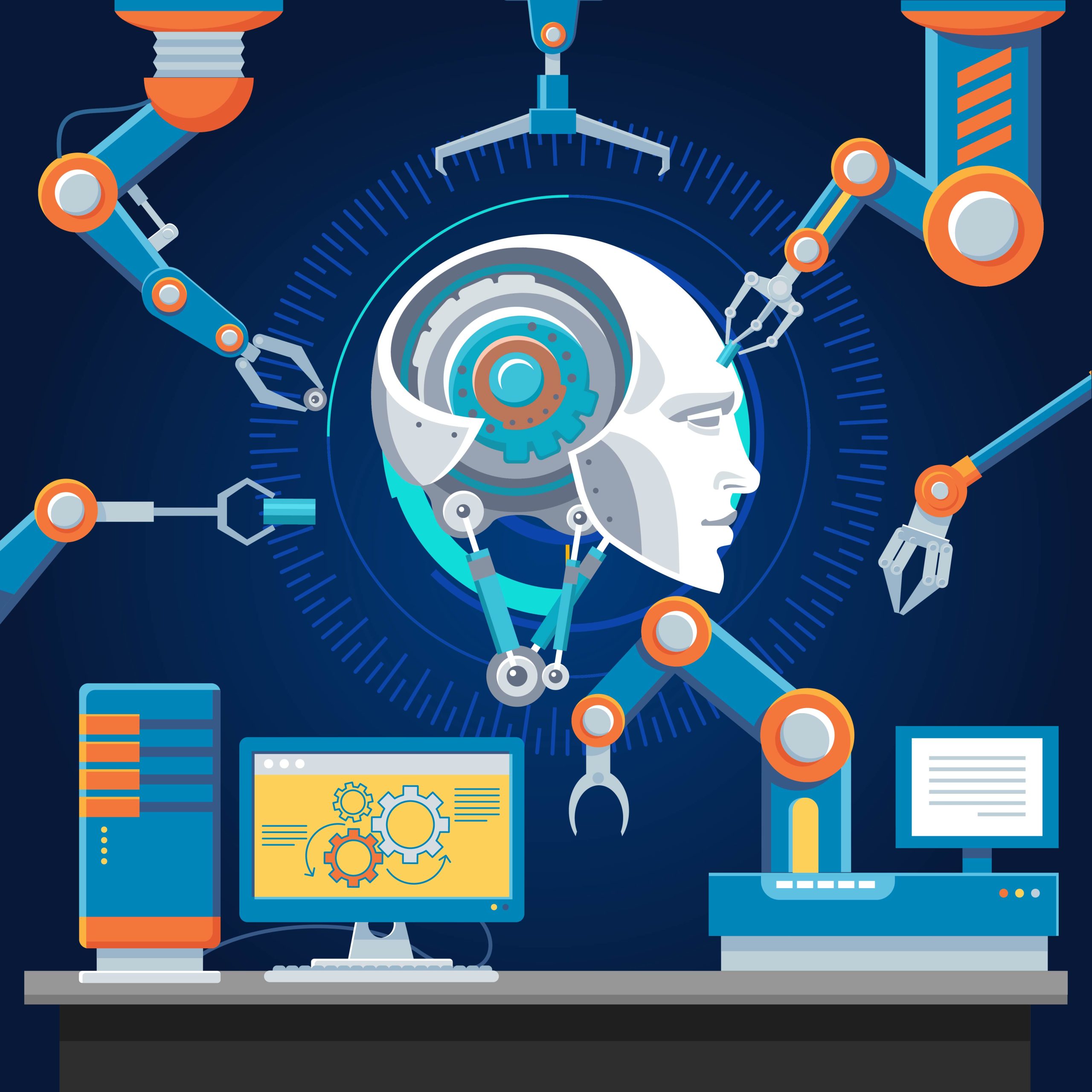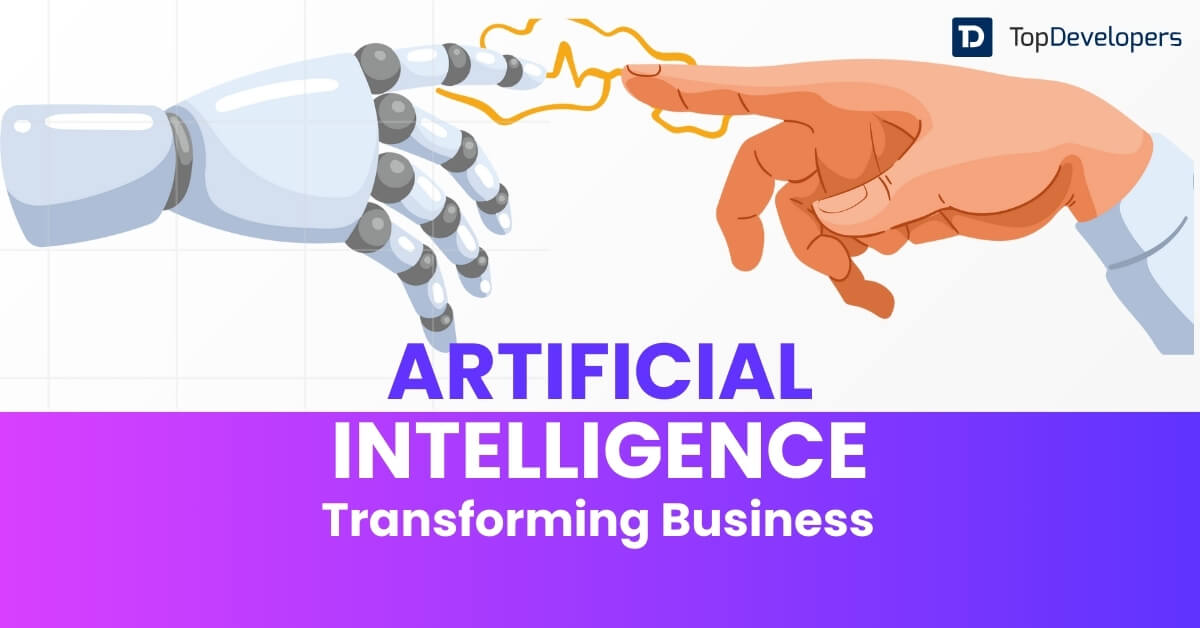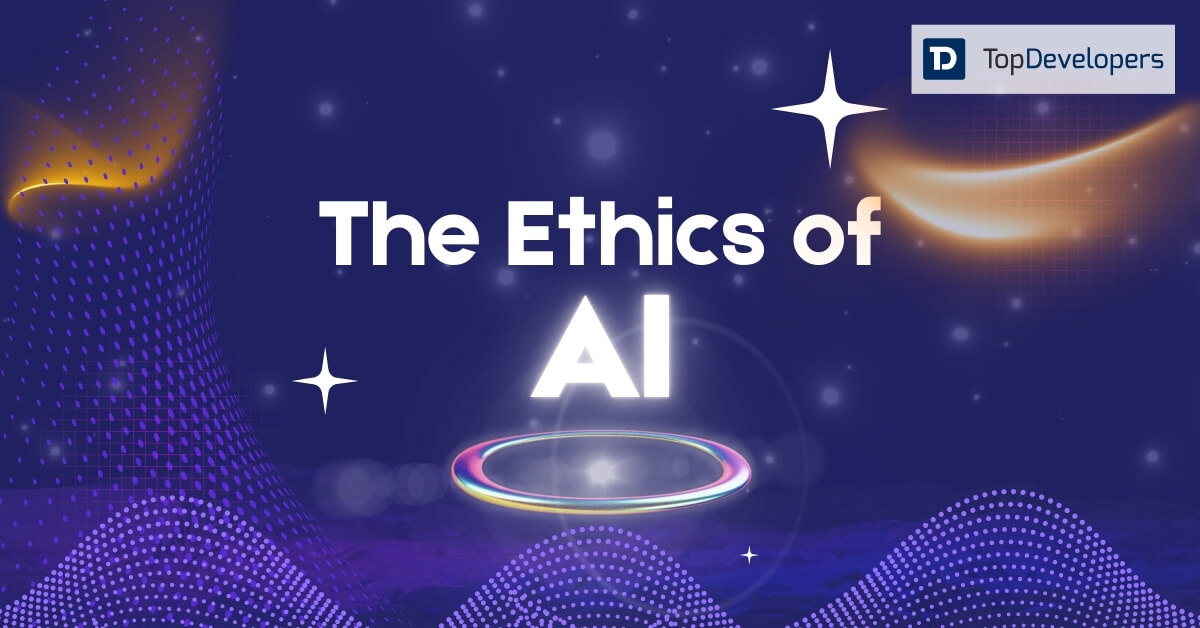
From tailored recommendations on your preferred streaming platform to autonomous cars on our roads, artificial intelligence (AI) is transforming sectors and driving inventions. According to Statista, the global AI market is projected to reach approximately 244 billion U.S. dollars in 2025, highlighting the significant investment and growth in this sector. But how can an artificial intelligence initiative come to pass? As artificial intelligence (AI) rises to a major presence in the tech scene, it is changing several sectors, including manufacturing, banking, healthcare, and more. This detailed book demystifies the AI development process by dissecting the main phases required in transforming an artificial intelligence project from idea to execution. From project managers and developers to stakeholders and users, everyone engaged in artificial intelligence development must first understand these stages.
Table of Contents
What Is AI Development?
AI development is the process of building intelligent systems that can mimic human thinking. These systems learn from data, identify patterns, and make decisions with little to no human input.
It focuses on creating models that can perform tasks such as predicting outcomes, processing language, or automating workflows. AI is behind many of the tools we use every day, including virtual assistants, recommendation engines, and smart search features.
The process begins with a clear goal. Developers gather and prepare data, choose the right algorithms, and train the model to perform specific tasks. Once trained, the model is tested for accuracy and deployed into a real-world environment.
AI development helps businesses solve complex problems. It boosts productivity, improves decision-making, and creates more personalized user experiences. Industries such as healthcare, finance, retail, and manufacturing rely on AI to stay competitive.
As tools and frameworks improve, AI projects are becoming faster and more cost-effective. Whether creating a chatbot or a system that forecasts demand, AI development provides a structured path to innovation.
8 Steps of the AI Development Process
Comprehensive and involving several phases, the AI software development process guarantees the production of scalable, dependable, and successful AI solutions. The 8 steps usually accepted in the sector are as follows:
-
Problem Definition and Objective Setting
- Clearly defining the problem you want to tackle and establishing particular, quantifiable goals comes first in every artificial intelligence development effort. This relates to:
- Determine the issue by finding the particular problem or possibility AI could handle.
- Define what success looks like. The objectives can be raising user experience, lowering costs, or increasing accuracy.
- Involve stakeholders to make sure the goals complement corporate aims and consumer wants.
-
Data Collection and Preparation
- An AI’s lifeblood is data. AI model performance is highly influenced by data quality and volume. This part comprises
- Data collecting calls for compiling information from many sources, including APIs, databases, and outside datasets.
- Remove or fix erroneous, missing, or pointless data in data cleansing.
- AI technical stacks Data transformation—which could call for normalizing, encoding, and feature engineering—turns data into a format fit for analysis.
- Create training, validation, and test sets out of the data to assess the performance of the model.
-
Exploratory Data Analysis (EDA)
- Predictive analysis helps you to examine the data to find trends, relationships, and insights guiding feature engineering and model selection. EDA is data analysis meant to help one grasp its structure, trends, and linkages. This phase facilitates:
- Visualizing Information: Plot and chart images of data distributions, relationships, and anomalies.
- Recognizing Trends: Find basic trends and patterns that might guide model choice.
- Find which variables—that is, features—are most pertinent to the situation.
-
Model Selection
- Reaching the intended results depends on selecting the correct artificial intelligence model. This deals with algorithm selection. Choose suitable algorithms depending on the kind of problem (classification, regression, or clustering).
- Create the model’s architecture with layers and neural network parameter sets.
- Hyperparameter tuning helps to maximize hyperparameters, hence enhancing model performance.
-
Model Training
- Feeding the produced data into the chosen algorithm helps to learn patterns and relationships in a model training process. This phase comprises
- Training Methodology: Train the model using the training dataset.
- Tune the model to prevent overfitting using the validation dataset.
- Performance Measurements: Analyze the model with regard to accuracy, precision, recall, and F1 score.
-
Model Evaluation
- Using the test set, assess the performance of the model to guarantee it generalizes effectively to fresh, unprocessed data. This stage consists in
- Experimenting involves utilizing the model on the test set.
- Examining the outcomes will help one to spot both strengths and shortcomings.
- Examining mistakes helps one to know where the model is failing and the reasons behind it.
-
Model Deployment
- Implementing the model into a production setting is necessary after training and evaluation. This relates to:
- Integration: Including the model into the current application or system
- Please ensure the model is capable of handling the anticipated demand and can scale as needed.
- Create monitoring to track model performance and find any problems.
-
Maintenance and Updating
- AI models need constant maintenance to keep current and accurate. This spans
- Retrain the model periodically using fresh data to change with the times.
- Constant performance monitoring of the model will help you make necessary corrections.
- Create a feedback loop to include user comments and steadily advance the model.
Benefits of Implementing a Robust AI Project Life Cycle
Implementing a robust AI project life cycle significantly enhances the success, efficiency, and quality of AI projects.
-
Increased Success Rate:
A well-structured project life ensures the completion of all necessary actions, thereby increasing the likelihood of delivering a successful artificial intelligence solution that meets corporate objectives.
-
Risk Reduction:
Early identification and mitigation of such issues—such as unclear objectives, data quality concerns, or technical challenges—helps to lower the chances of expensive mistakes and project failures. By using this proactive strategy, teams can concentrate and address problems before they become more serious.
-
Improved Efficiency and Productivity:
Clearly defined roles at every level and efficient workflows help simplify the development process. This clarity accelerates deployment time, lowers duplication of effort, and helps teams operate more effectively.
-
Enhanced Quality of AI Solutions:
Rigorous procedures at every stage—from data preparation to model evaluation—ensure that the final AI product is dependable, accurate, and strong, therefore guaranteeing enhanced quality of AI solutions. Ongoing review and improvement further enhance the quality of the solution.
-
Better Resource Allocation:
Explicit planning and tracking of resources (time, knowledge, computational power) across each life cycle phase helps to use assets more effectively and in a balanced manner, thereby preventing bottlenecks and over-allocation.
-
Adaptability and Continuous Improvement:
The iterative character of the AI project life cycle lets teams rapidly adjust to new data, shifting needs, or developing technologies. In the fast-paced AI environment, long-term project success depends on this agility.
-
Stakeholder Alignment and Transparency:
Structured life cycles help improve communication and alignment among stakeholders, therefore guaranteeing that everyone understands project goals, progress, and expectations.
Cost of AI Software Development
In 2025, factors such as project complexity, data needs, team location, and the type of AI solution under development will influence the cost of AI software development. This is a breakdown based on the most recent industry statistics:
-
General Cost Ranges
- Simple AI Projects: You may spend between $10,000 and $50,000 on things like basic chatbots and automation.
- Mid-level Complexity: Recommendation engines and predictive analytics can cost nearly $170,000.
- Advanced/Enterprise Solutions: Custom generative AI and other high-grade technologies cost between $170,000 and $500,000 and beyond.
-
AI Development Cost Distribution
- Simple AI (chatbots, etc.) can cost from $10,000 to $50,000.
- Moderate complexity
- Advanced/Enterprise—$170,000–$500,000+
- Generative AI MVP+
- AI Agent Development
-
Principal Cost Considerations
- Scope & Complexity: Customizing more features and integrations drives expenses.
- Data Requirements: You can use thirty to forty percent of the total expenditure for data collection, cleaning, and labeling.
- Model Type: Custom LLMs can cost millions; fine-tuning pre-trained models is less costly than constructing custom models from scratch.
- Team Structure & Location: While outsourcing to Eastern Europe or Asia can cost $30–$50/hour, in-house teams (US/Europe) cost $50–$100+/hour.
- Infrastructure: On-site GPU servers can run between $50,000 and $1 million; cloud AI services (AWS, Azure, Google Cloud) can add $5,000–$100,000 a year.
- Sector: Because of security and compliance requirements, regulated sectors—healthcare, fintech—often pay more.
Additional Costs
- AI Consulting: Expert direction pays $170–$400 an hour.
- Third-party AI Tools: Specialized software can set annual expenses ranging from $40,000+.
- Data Annotation: Large-scale data labeling might run you between $10,000 and $250,000+.
Conclusion
Development of artificial intelligence is a methodical process needing careful planning, implementation, and monitoring. Following these guidelines helps stakeholders negotiate the complexity of artificial intelligence development so that the outcome is a valuable solution. Maintaining success in this fascinating and constantly changing subject depends on being knowledgeable and flexible given the rapid speed of artificial intelligence developments. The top AI development companies follow this step-by-step approach as a standard. Constructing strong artificial intelligence systems is a multidisciplinary path combining ethics, domain expertise, software engineering, and data science. Trends such as AutoML, federated learning, and multimodal models will help further simplify the evolution of artificial intelligence.
FAQs
1. What is the AI development process and why is it important?
The AI development process is a structured workflow for building artificial intelligence solutions, from problem definition to deployment. It ensures AI models are accurate, scalable, and aligned with business goals.
What is the AI development lifecycle?
The AI development lifecycle is a step-by-step process to build and manage AI systems. It includes defining goals, collecting data, training models, testing results, and deploying the solution. Continuous monitoring helps improve performance over time.
2. What are the key steps in developing an AI application?
Core steps include:
- Defining the problem
- Collecting and preparing data
- Selecting the right algorithms or models
- Training and validating the model
- Deployment and continuous improvement
3. How do you collect and prepare data for AI development?
Data collection involves gathering relevant, high-quality datasets. Preparation includes data cleaning, labeling, normalization, and splitting into training/testing sets to ensure accurate and bias-free AI model training.
4. Which tools are commonly used in the AI development process?
Popular tools include Python, TensorFlow, PyTorch, Jupyter Notebooks, and scikit-learn for development, and AWS, Google Cloud AI, or Azure ML for deployment and scalability.
5. How long does it take to build an AI solution?
The timeline depends on complexity, data availability, and model goals. Simple models may take weeks, while enterprise-grade AI systems can take several months due to testing, tuning, and integration phases.
 Gillian Harper
| Jul 14, 2025
Gillian Harper
| Jul 14, 2025
A professionally engaged blogger, an entertainer, dancer, tech critic, movie buff and a quick learner with an impressive personality! I work as a Senior Process Specialist at Topdevelopers.co as I can readily solve business problems by analyzing the overall process. I’m also good at building a better rapport with people!



